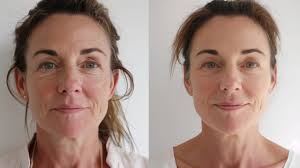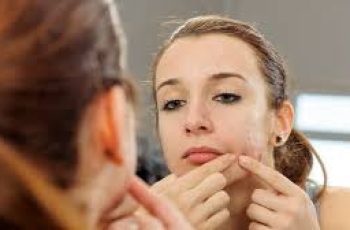
Microneedling: Safety, Benefits, Before and After
Microneedling is a cosmetic procedure that involves using small, sterilized needles to create tiny punctures in the skin. This face needling treatment is a form of collagen induction therapy used to treat wrinkles, sagging skin, fine lines, scars and hair loss. Microneedling devices such as the Dermaroller® and DermaPen® are primarily used on the face to reduce the appearance of acne scars, dark spots, wrinkles, and large pores.
Microneedling has become a popular skin treatment for aging skin due to its ability to restore collagen. It is also used to treat hyperpigmentation, scars and stretch marks. We perform microneedling in my dermatology practice and I have a chapter on it in my dermatology textbook called Baumann’s Cosmetic Dermatology (McGraw Hill 2022). This blog will give you the highlights of what my book says and what I tell my patients about microneedling. I will discuss what microneedling is, its benefits, cost, safety considerations, what to do before and after the procedure and how to choose the right needle size if you choose to do microneedling at home. Microneedling can also be used to treat hair loss but this blog will focus on microneedling of the face.
Miconeedling is not right for all skin types
Best for acne scars and aging skin
Professional is better than DIY!
A good skin care routine can give the same results
What is Microneedling?
Microneedling is when needles are used to systematically and intentionally wound the skin. This causes a wounding response in the skin and turns on different cell signals like growth factors that result in the induction of collagen production.
Microneedling may be done by a dermatologist, physician assistant, nurse practitioner or aesthetician. The law about who can do microneedling depending on which state and country you live in. In some instances, microneedling can be done at home. This article will discuss best practices and help you decide if you should do microneedling and what to do to increase safety and reduce the risks.
Microneedling with PRP
Platelet-Rich Plasma (PRP) is a component of blood that is rich in growth factors and healing proteins. The PRP is extracted from your own blood, which is processed to concentrate the platelets. (A blood draw is performed in he medical practice.) When combined with microneedling, PRP enhances the skin’s natural healing process. The growth factors in PRP stimulate collagen production, accelerate tissue repair, and improve overall skin texture and tone. This synergy between microneedling and PRP results in more pronounced and faster improvements.
There have been reports in Florida of patients getting HIV after this procedure because they were treated with an HIV+ person’s blood. So when your medical provider draws your blood- ask them to write your name on the blood tube in front of you to help prevent a mix up with another person’s blood. This is one of the many reasons you need a reputable doctor who will not cut corners.
Radiofrequency (RF) MIcroneedling
Radiofrequency (RF) microneedling combines the collagen-stimulating benefits of traditional microneedling with the tissue-tightening effects of radiofrequency energy. RF energy is delivered through the microneedles into the deeper layers of the skin, causing controlled thermal damage that leads to collagen contraction and stimulation of new collagen production. While this technique can effectively tighten skin and improve its texture, the heat generated by RF can increase the risk of side effects such as hyperpigmentation, especially in darker skin tones. Therefore, careful consideration and professional expertise are essential when using RF microneedling.
MIcroneedling as Skin Care Delivery
Microneedling can significantly enhance the delivery of skincare ingredients that are typically too large to penetrate the skin, such as peptides. By creating micro-channels in the skin, microneedling allows these active ingredients to reach deeper layers where they can be more effective. This method can improve the efficacy of topical treatments, making them work better and faster. Although the use of microneedling for enhanced drug and cosmetic delivery is not yet FDA-approved, ongoing studies are investigating its potential. The results so far suggest that microneedling could be a valuable tool for maximizing the benefits of advanced skincare formulations.
Microneedling at Home
At-home microneedling devices generally feature shorter and thinner needles compared to professional devices, making them less effective for significant skin improvements. One of the main challenges of at-home microneedling is ensuring the needles enter the skin at a precise 90-degree angle, which is difficult to achieve due to the curved surface of the face. This can lead to inconsistent results and increase the risk of complications. While at-home microneedling is more cost-effective, it can result in costly side effects such as scarring and post-inflammatory hyperpigmentation if not done correctly. For optimal and safe results, it is recommended to undergo microneedling treatments performed by trained professionals.
Before and After
In my experience, the best before and after resutls are seen in the treatment of acne scars as seen in the photos below.
Benefits
Microneedling offers numerous benefits for skin health and appearance:
Improved skin texture
Less obvious scars
Less obvious stretch marks
Increased skin thickness
Fewer fine lines and wrinkles
Decreased dark spots
Improved skin firmness
Many people believe it reduces pore size but this may just be due to swelling after the procedure.
Who Benefits Most?
Microneedling has many benefits but it is not right for everyone. I highly recommend you see a reputable doctor or medical provider to discuss if you can benefit from this cosmetic procedure. In general, here is a guide to who will benefit from needling devices:
Melasma: Microneedling is not safe due to the risk of post-inflammatory hyperpigmentation. Skin care and oral tranexamic acid are far superior for treating melasma.
Acne: Microneedling is effective.
Acne Scars: Microneedling is better than skincare for treating acne scars.
Rosacea: Not recommended.
Wrinkles: Can be beneficial but depends on skin type.
Sensitive Skin: Generally not recommended.
Resistant Skin: Can be effective for product absorption.
To get more personalized advice, take our skin type quiz to identify your skin’s barriers to skin health before you get any procedures done.
Microneedling is generally not recommended for sensitive skin types or many dry skin types. The only skin types that should do Microneedling my option are light skinned individuals with these skin types:
Baumann Skin Type 16:DRNW (Dry Resistant Non-Pigmented Wrinkle-Prone)
Baumann Skin Type 12: ORNW (Oily Resistant Non-Pigmented Wrinkle-Prone)
These skin types tend to have a strong skin barrier, making it difficult for products to penetrate effectively. Microneedling can enhance antiaging ingredient absorption for these types. However, using the right skincare products is often more effective than microneedling.
Cost
The price of microneedling depends on the area treated and the condition treated. Averge cost is $350 for the face per treatment. A treatment series of 4 treatments may cost around $1500. Price varies greatly but this is one of those situations where if you decide to do microneedling- splurge on a goood doctor because side effects can be very bothersome and expensive and may be permanent.
Skin Problems That Improve with Microneedling
Scars
Microneedling can treat several different types of scars and is particularly beneficial for treating atrophic scars, which are depressed or sunken into the skin. These scars, often resulting from acne or chickenpox, can significantly improve with microneedling. The procedure also shows promise for hypertrophic scars, which are raised above the skin surface, and keloid scars, which are thick and irregular. By breaking down old scar tissue and promoting the growth of new, healthy skin, microneedling can reduce the appearance of these scars.
Microneedling treatments for scars require multiple sessions – usually 6-8- to see optimal results. Depending on the severity and type of the scar, treatments are usually spaced about 4-6 weeks apart, with noticeable improvements often seen after 3-6 sessions. Clinical studies have shown that microneedling can improve scar appearance by 50% or more after several treatments. (3)
Enhancing the efficacy of microneedling can be achieved by combining it with topical treatments. Applying skincare products such as retinoids, hyaluronic acid, or growth factors post-procedure can further enhance collagen production and improve skin texture. However, it’s important to note that consistent use of the correct skincare routine is much more effective and safer in the long run than microneedling alone. Long-term use of retinoids, for example, has been proven to slow aging, whereas the inflammation caused by microneedling could potentially accelerate skin aging. Additionally, there are no long-term studies on the effects of this procedure for skin aging, so a cautious approach is advised. Microneedling is highly effective for acne scars but is not recommended for melasma due to the risk of post-inflammatory hyperpigmentation. For melasma, skincare and oral tranexamic acid are superior treatment options.
Acne Scars
There are several types of acne scars that are defined by their shape such as:
ice pick
rolling scar
box car
atrophic
Box car and rolling scars seem to respond best to microneedling treatments. Ice pick scars do not improve with this procedure. For optimal results in treating acne scars, needle lengths between 1.5 to 3.0 mm are recommended.
A study by Alster in 2020 (4) evaluated the efficacy of microneedling on scars in 120 patients with diverse skin phototypes (I to VI). These patients had facial and nonfacial scars from various causes, including acne, trauma, and surgery. Using a mechanical microneedling device, patients received one to six monthly treatments without any additional topical or intralesional therapies. Two blinded assessors rated the clinical improvement of scars at 1, 3, 6, and 12 months post-treatment on a five-point scale, and side effects were monitored.
The study found that all scars showed at least 50% improvement after an average of 2.5 treatments. Over 80% of patients experienced 50-75% improvement, and 65% demonstrated more than 75% improvement. Importantly, the study noted minimal side effects, even in darker skin types.
Stretch Marks
Microneedling is a treatment option for striae distensae (stretch marks), but can lead to hyperpigmentation in dark skin types. According to a study by Alster and Li (5), this procedure is particularly effective for both light and dark skin tones due to its lack of thermal injury, which minimizes the risk of post-inflammatory hyperpigmentation. The study involved 25 adults with stretch marks on their trunk and extremities. Patients received one to three monthly treatments, with all showing at least 50% improvement after an average of 1.8 treatments. Remarkably, 28% of patients exhibited more than 75% improvement. Striae in thicker skin regions, such as the buttocks and thighs, responded comparably well to those in thinner areas, like the breasts, without requiring additional sessions. Side effects were minimal, primarily limited to transient erythema, with no infections or dyspigmentation observed. This study supports this treatment as a safe and effective treatment for stretch marks across various skin types and body locations, with further studies anticipated to standardize treatment protocols. Always wear sunscreen and sun protective clothing over the treated area to decrease the risk of post inflammatory hyperpigmentation.
Wrinkles
In a recent study (10), 35 subjects received four monthly microneedling treatments to treat skin aging. The results were promising: facial dermal and epidermal density increased by 101.86% and 19.28%, respectively, three months post-treatment. Additionally, facial elasticity improved by 28.22%, and collagen type III and elastin gene expression significantly increased. This is a good sign that this procedure can result in skin rejuvenation. However, in my opinion and experience as a dermatologist, a good skin care routine can show similar results. It just takes a bit longer but skin care is much safer than purposely wounding the skin. For example- topical defensins can have similar result on the epidermis.
Microneedling Tools: Pens, Rollers, and Needles
Needle Length
The width and length of the needles is the most important factor when deciding which needle, roller or pen device is best. The best needle length depends upon what you are treating and which areas of the face you are treating. The Microneedling Depth Chart below gives you guidance on what the best needle length is for each area of the face. (1)
FDA Approved Microneedling Tools
Many of the tools used for microneedling are not FDA approved.
Here is a list of FDA-cleared microneedling devices:
SkinPen Precision
MicroPen EVO
Dermapen 4
These devices have been approved for specific uses such as improving the appearance of facial acne scars and wrinkles on the neck. They are designed to ensure safety and efficacy when used by trained professionals.
DermaRoller
Dermaroller is the name of the most popular and first microneedle roller for at home use. It has been around for decades but has gotten more popular for at home microneedling in the last 5 years.
Microneedling Pen
There are many good pens for this procedure. I suggest buying one of the FDA approved ones listed above. However, please don’t do microneedling yourself at home. Its just a terrible idea for many reason including:
Sterility
Ability to consistently have needles enter skin at a 90 degree angle
Technique
Safety of needle size choice requires knowldege of skin thickness in various areas
Summary
Microneedling can offer significant benefits for certain skin types, however, it is not suitable for all skin types. Consulting with a dermatologist and using the right skincare products after microneedling is often a more effective and safer approach. If you decide to proceed with microneedling, ensure it is performed by a qualified professional to minimize risks and maximize benefits.


